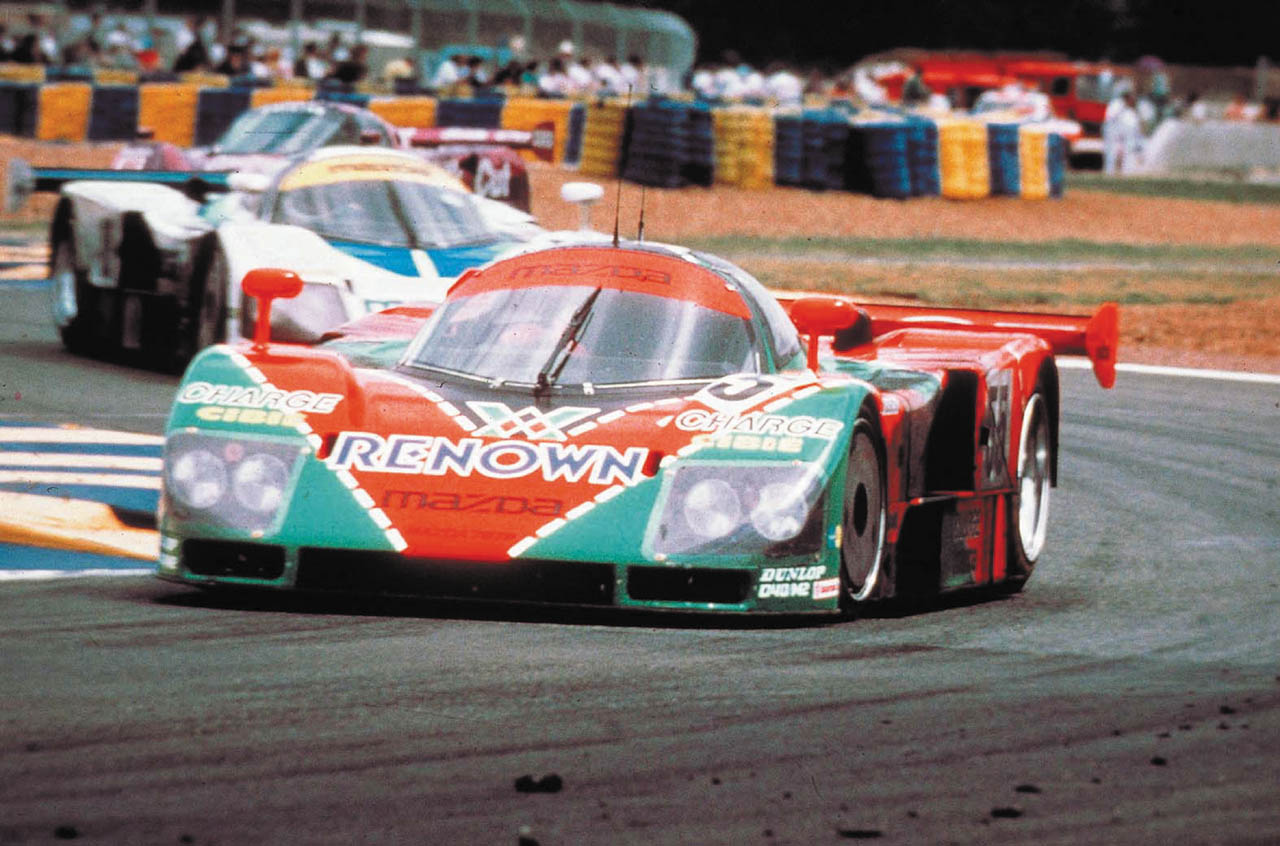
OK, I'm going a bit off my regular concept of the Dream Car of the Month with a car here that was never a road car - the Mazda 787. Still, it is an historic race car that has become iconic due to it's one major accomplishment. It won the 1991 24 Hours of Le Mans making it the only Japanese car and the only non piston engined car ever to win that great race.
The 787 was an evolution of the Mazda 767 which was campaigned in 1988 and 1989. The 787 used a new engine, the R26B, which was a naturally aspirated 4 rotor Wankel motor with 3 plugs per rotor producing over 700HP. This engine was said to be able to make around 900HP in full tune and spin to a 10,500RPM redline. However, with reliability and fuel economy foremost in Mazda's plan, they kept the power limited. The engine was connected to Porsche 5 speed transmission.
Designed by Nigel Stroud, the car made use of carbon and kevlar in it's construction and all 787s were built in the UK by Advanced Composite Technologies. The 787B cars produced in 1991 also featured a unique computer controlled variable intake system to feed air to the rotary engine during varying speed and RPM conditions.

The 787 had a fairly unimpressive racing career aside from the 1991 Le Mans win. The cars were classified as Class C prototypes and raced in the World Sportscar Championship, All Japan Sports Prototype Championship, and at Le Mans. Reliability was a concern in 1990 as many failures caused by the R26B's high heat output resulted in several DNF results. The 1990 Le Mans race saw Mazda campaign 2 787s and a 767B. The cars were prepped by legendary driver Jacky Ickx who had been hired by Mazdaspeed but, unfortunately, both 787s retired due to failures and the remaining 767B finished in 20th.
In 1991 Mazda teamed with the Oreca team to campaign the 787 and new 787B. Oreca and consultant Jacky Ickx convinced the governing bodies that the 787 should be allowed less weight than their competitors. The result was that the 787 was allowed to weigh 1,830lbs rather than 2,205lbs. Three 787s were entered in the 1991 Le Mans race - one 787 and two new 787Bs. The cars all had the standard Mazda racing color scheme except for the #55 787B driven by Johnny Herbert, Volker Weidler, and Bertrand Gachot which was painted a crazy orange and green pattern. The cars all qualified in the top 20 and early in the race the #55 car was in 3rd place with another 787 behind it in 4th. Over the course of the race, the #55 787B proved to not only be reliable but fuel efficient and it took over 1st place with about 2 hours remaining in the race. The cars ahead had all fallen to mechanical failures allowing the #55 787B piloted by Johnny Herbert to cross the finish line first, sealing the car's place in racing history.
That car, 787B-002, was retired by Mazda following Le Mans and remains in the Mazda Museum in Hiroshima, Japan. The 787s never finished higher than 3rd for the rest of that racing season but they didn't need to. They had accomplished something very special that no other Japanese manufacturer has been able to do before or since. They also proved the viability of the Wankel rotary engine which performed flawlessly during the race. Sadly, after the 1991 season, the FIA outlawed the Wankel engine in order to force the move to 3.5L Formula One engines. Mazda though has not abandoned the rotary engine and it lives on in the RX production cars like the current RX8.











Tidak ada komentar:
Posting Komentar